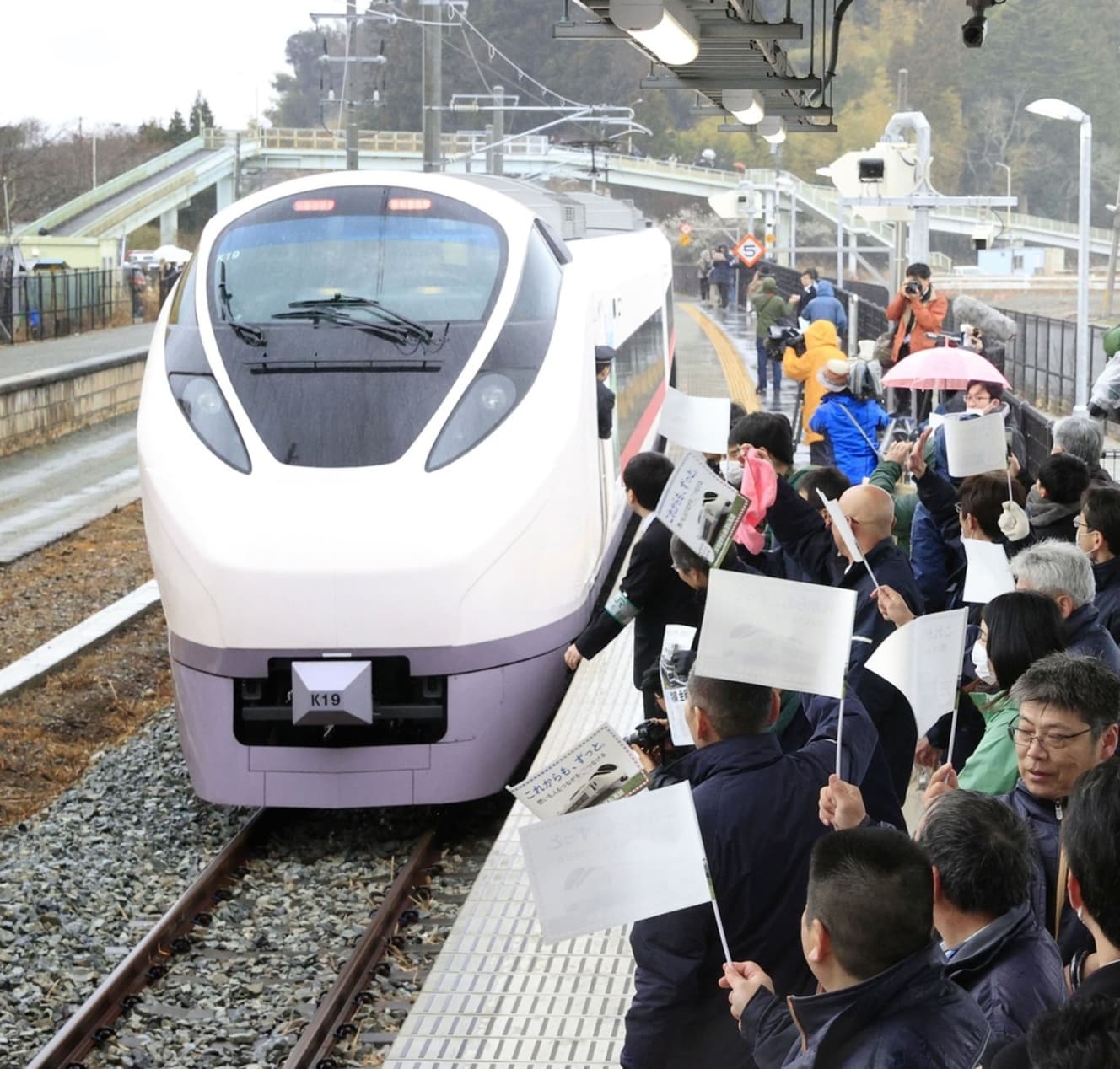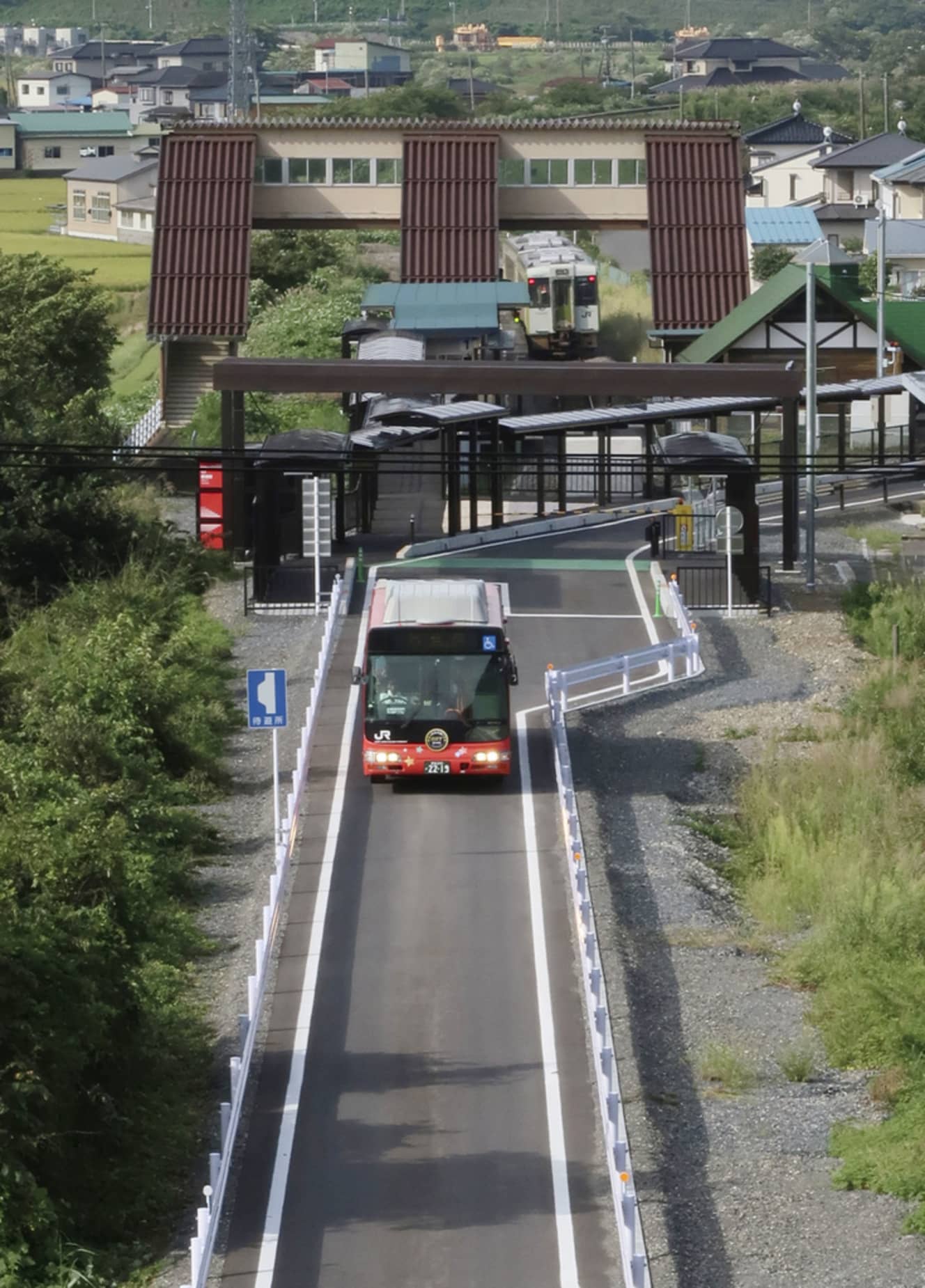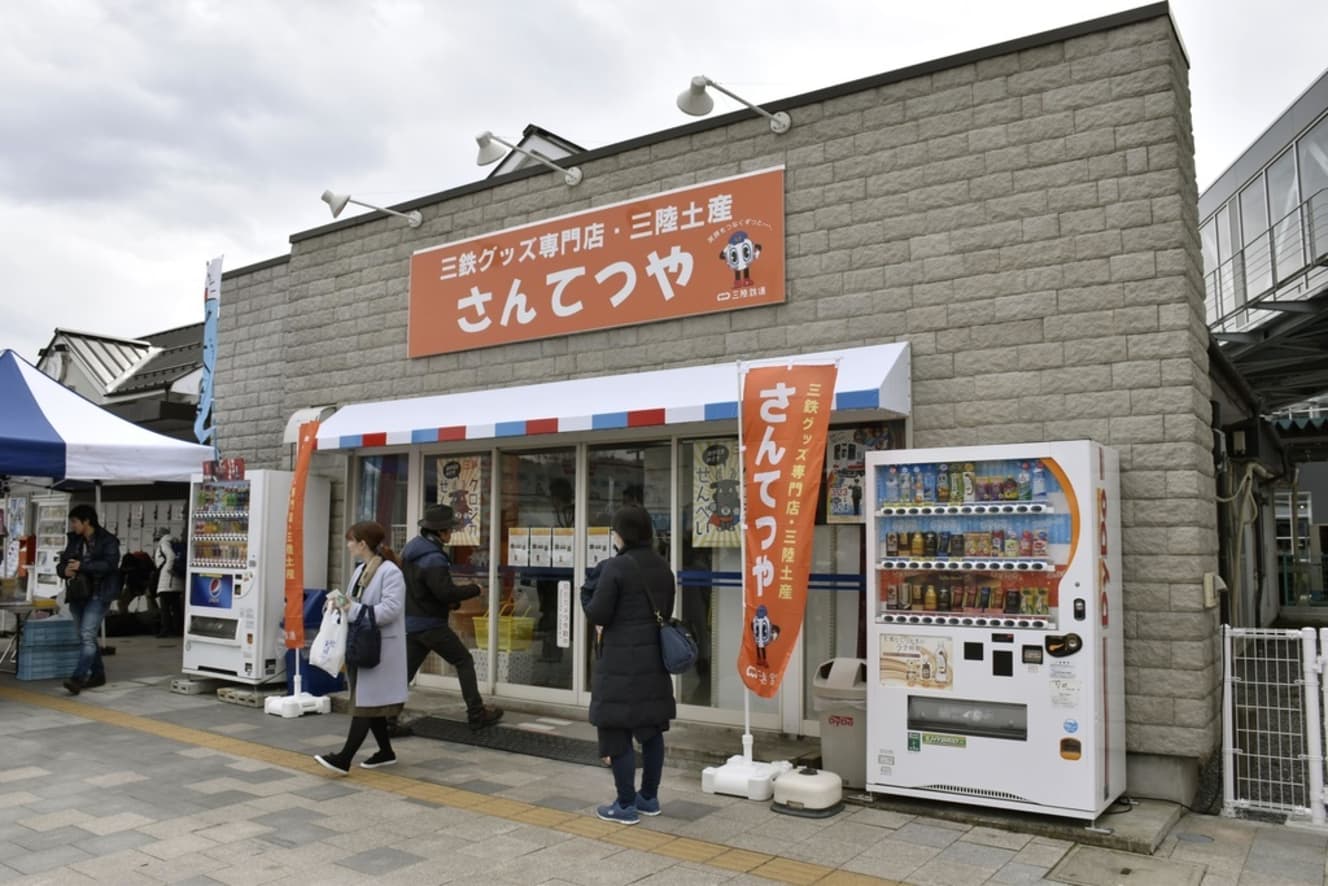Take an “Akinori Sasaki Trip” with the “JR East Unlimited Ride Ticket,” on sale soon!
Visit the hometown where the "monster" grew up with a special ticket commemorating the 150th anniversary of the railroad!

This year, which marks the 150th anniversary of the start of the JR line, JR East will release a special ticket. The ticket allows unlimited travel on all JR East lines and seven other companies’ railroad lines for three consecutive days from October 14 to 27. The ticket also allows unlimited use of nonreserved seats on limited express trains and Shinkansen trains, including four reserved seats. The price is 22,150 yen for adults and 10,150 yen for children, and tickets go on sale one month prior to the first day of use. In other words, if you want to use the service from October 14, you can purchase from September 14.
The cost of the unlimited ride between Tokyo and Furukawa (unreserved seat, 22,220 yen round trip) is enough to pay for itself, but it would be a waste not to make the most of it. So, in honor of the 150th anniversary of the start of the railroad industry, I would like to introduce a plan that I have devised for more than 10 years in the railroad industry.
JR East operates Shinkansen trains such as “Hayabusa,” “Tsubasa,” and “Komachi,” and limited express trains on conventional lines such as “Azusa” and “Hitachi,” all of which have reserved seats, and passengers using these trains must use one of the reserved seat slots (that is, they can take no more than four trains). Reservations for reserved seats can be made as early as 10:00 a.m. one month prior to the date of use, so be sure to reserve your seats before they are sold out.
Many train lines in the Tohoku region were damaged by the torrential rains in August, and operations have been suspended. Of these lines, those that are expected to take a long time to recover, such as those with bridge overflows, have been excluded from the course; other lines will be restored by October. Please note that the course may not be completed depending on the restoration status in the future.
<The Tohoku Coastline Round-Trip Tour Course
Day 1
The Tohoku Shinkansen is the usual way to travel from Tokyo to Tohoku, but there is more than one route to Tohoku. However, there is more than one route to Tohoku. Before the opening of the Tohoku Shinkansen, the Joban Line used to run many express trains bound for Sendai and Aomori.
The Joban Line was originally built to transport coal from the Joban Coal Mine and personnel. As coal transport declined, the Joban Line became a bypass route, supplementing the overcrowded Tohoku Main Line with sleeper express trains such as “Hakutsuru” and “Yuzuru”.
Today, only the business limited express trains “Tokiwa” and “Hitachi” run between Shinagawa Station and Katsuta and Iwaki Stations, but the “Hitachi” is unique among these, with only three round trips up and down the line to/from Sendai.
The Joban Line had been suspended for a long time on some sections in Fukushima Prefecture due to the Great East Japan Earthquake and the nuclear power plant accident, but operations have been gradually restored since 2017 and will resume on the entire line in March 2020. The “Hitachi” trains to and from Sendai also returned to service for the first time in nine years.
Before the earthquake, it was announced that the “Hitachi” trains to and from Sendai would be split between Ueno and Iwaki stations and between Iwaki and Sendai stations, but the plan was scrapped after the earthquake, and the line survived as a symbol of the Joban Line reconstruction. This time, we would like to start our trip with the “Hitachi-Sendai direct limited express train.
Departing from Tokyo Station at 7:53 a.m., the “Hitachi No. 3” arrives at Hitachi-Taga Station at 9:37 a.m. and runs almost along the Pacific coast from there to Sendai. After 4.5 hours of travel, the train arrives at Sendai Station at 12:29 pm.
From Sendai, we will continue north along the coastline. First, we will board the “Senseki Tohoku Line” departing from Sendai Station at 1:13 p.m. for Ishinomaki. The Senseki Tohoku Line is an express train connecting Sendai to Ishinomaki Station by transferring from the Tohoku Main Line to the Senseki Line, and started service in 2015 as part of the earthquake reconstruction project.
The train transfers to a regular Ishinomaki Line train at Ishinomaki Station and arrives at Maeyachi Station at 14:55. From here, the train will continue on to the coastal areas of Miyagi and Iwate prefectures that were most severely affected by the tsunami from the earthquake. Symbolic of this is the BRT (Bus Rapid Transit) system, which replaced the 55.3-km Kesennuma Line (between Yanaizu and Kesennuma) and 43.7-km Ofunato Line (between Kesennuma and Mori), which were severely damaged by the earthquake, with bus-only tracks.
The BRT Kesennuma Line departs Maeyachi Station at 15:13 and arrives at Kesennuma Station at 17:37. The same section of the line during the railroad era took about two hours, so the travel time has increased by more than 20 minutes, and the number of trains has tripled in some sections. It is regrettable that the railway line was lost, but from a regional transportation point of view, it has become much more convenient.
Express buses are the main form of intercity transportation between Sendai and Kesennuma, and few people ride through this section of the city. Therefore, BRTs use route bus vehicles without toilets, and after an hour’s ride, one’s buttocks start to hurt. Normally, I would not recommend riding the BRT for more than two hours, but I would like to take this opportunity to see the current situation in the affected area.
The BRT is recommended to get off not at Kesennuma Station, the last stop, but at Minami Kesennuma Station, two stops before Kesennuma Station. If you go toward the sea, you will find the fish market, inns, and hotels, and if you go inland, you will find the center of the city with many restaurants. Since the first day ends in Kesennuma, an inn in this vicinity would be your destination. Kesennuma is known as one of the leading fishing ports in Tohoku. Taste the delicacies of the sea as you walk along the coast.


Day 2
On the second day, the BRT buses again departed from Kesennuma. The BRT bus departs from Kesennuma Station at 10:59 a.m. for Ofunato Line Mori, but depending on the location of your lodgings, you may also take the bus from Uchiwan Iriguchi Station (departing at 11:01 a.m.). By the way, the Ofunato Line is closely associated with the young pitcher Akinori Sasaki of the Lotte baseball team. Sasaki was born in Rikuzentakata, but lost his father and grandparents in the Great East Japan Earthquake, which also devastated the town. After the earthquake, he moved to Ofunato and went on to Ofunato High School. His subsequent successes are well known.
The BRT arrived at Mori at 12:16 pm. From here, the BRT will take the Sanriku Tetsudo Rias Line. Sanriku Railway is a third-sector railroad company that converted the Japan National Railways’ Mori Line, Miyako Line (between Mori and Kamaishi Stations), and Kuji Line (between Kamaishi and Kuji Stations), and took over the management of the JR Yamada Line between Kamaishi and Miyako Stations after the earthquake. Currently, the line runs 163 km between Mori and Kuji Stations. Although Sanriku Railway is a private railway, it is covered by the East Japan Pass, so no additional fare is required.
The journey on the Sanriku Railway is long: the train departs from Mori Station at 13:00 and arrives at Kamaishi at 13:51. After changing trains at Kamaishi, the train arrives at Miyako Station at 15:31. There are some restaurants in front of the station, but there is not much room because the next train departs at 16:35. If the restaurant is not too crowded, it is possible to stop by for a while, but if you miss the train, your entire itinerary will be disrupted, so do not overdo it. If you are worried about it, you can buy souvenirs at “Santetsuya,” a souvenir shop directly operated by Sanriku Railway, which is located next to Miyako Station.
The train departed Miyako Station and arrived at Kuji at 18:11. At Kuji Station, change to a regular train on the Hachinohe Line departing at 18:18, arriving at Hachinohe at exactly 20:00. While the Tohoku Shinkansen bullet train would travel the more than 700 km from Tokyo to Shin-Aomori in three hours, the approximately 278 km between Mori and Hachinohe would take seven hours. The Tohoku coastline has its own unique time flow. The second day ended with me chewing on such a thought.

Day 3
Proceeding at once around the limited express trains. The Tohoku Shinkansen “Hayabusa No. 95” departed Hachinohe Station at 8:35 a.m. and arrived at Shin-Aomori Station at 9:02 a.m. Then transfer to the Ou Main Line limited express “Tsugaru No. 2” departing from Shin-Aomori Station at 9:11 a.m., arriving at Akita Station at 11:45 a.m. From Akita, travel to Sakata Station on the Hetsu Main Line regular train departing at 12:08 p.m., and reach Niigata at 16:37 p.m. on the Inaho No. 10, departing at 14:31 p.m. from Sakata Station.
Finally, the train will return to Tokyo at 19:00 on the Joetsu Shinkansen “Toki No. 336” departing at 16:57. After traveling approximately 520 km on the first day, 272 km on the second day, and 870 km on the third day, the trip around the coastline of the Tohoku region is complete. Use your reserved seat slots for “Hayabusa” on the third day and for the other three trips on limited express and Shinkansen trains. Although it will be a trip of train rides, it will be a unique opportunity to learn about the present state of the Tohoku region.
≪Addition: Damage in the Akita Branch Office area due to heavy rain and future outlook≫.
On August 25, JR East announced that it would take several months to resume operations of the Ou Main Line, which was damaged by heavy rain. The construction period may be shortened, but if restoration is not completed by October 14, the route from Shin-Aomori to Akita on the third day will become unusable.
In that case, recovery is possible by taking the Hayabusa No. 14 from Hachinohe Station at 9:05 a.m. to Morioka (arriving at 9:41 a.m.) and the Komachi No. 5 from Morioka Station at 9:46 a.m. to Akita (arriving at 11:25 a.m.). Since there is room in this plan for reserved seats, we would like to respond by changing the “Inaho” or “Toki”, which can be boarded from the first train, to unreserved seats and take reserved seats on the “Hayabusa” and “Komachi”.
≪Continue to ” Gourmet foods available on the 5 Shinkansen lines with the “JR East Unlimited Ride T icket” (Part 2)
Interview and text by: Tatsuya Edakubo
(Railway Journalist) Born in Saitama Prefecture in 1982. After working for Tokyo Metro (Tokyo Metro) for 11 years, he became independent in 2017. He writes for various media, focusing on urban transportation in the Tokyo area.
